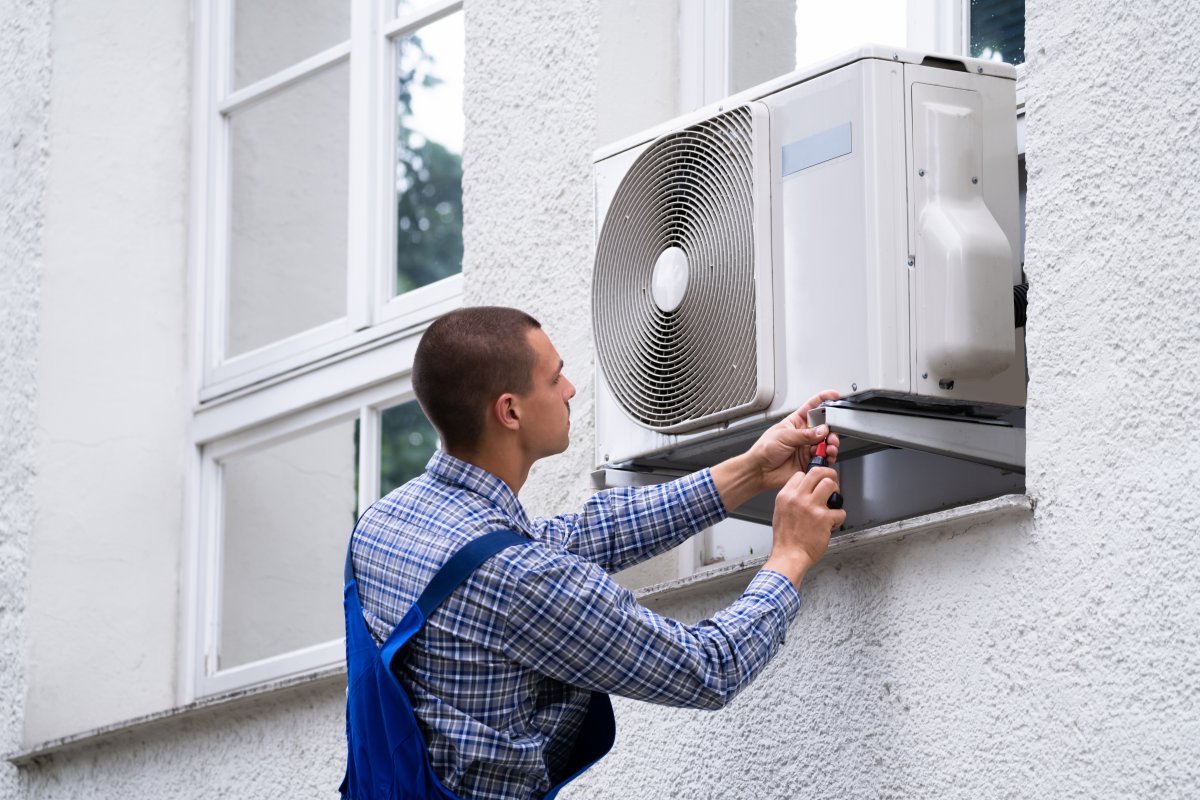As it gets warmer, more and more places need to be cooled – and air conditioning systems, although they work comparatively efficiently thanks to heat pump technology, need plenty of electricity. Novel materials can now help to make the systems more energy-efficient so that they don’t overwhelm the power grid even on hot days. As extreme heat continues to break records around the world, energy demand for air conditioning is expected to triple over the next few decades — an increase of about 4,000 terawatt-hours between 2016 and 2050, according to the International Energy Agency IEA. That would roughly correspond to the electricity needs of the entire US grid in 2022.
Advertisement
For this reason, the search for more efficient air conditioning technology is becoming increasingly urgent. While some companies focus on improving existing processes, others are looking for completely new systems using so-called desiccants. These devices could cool more efficiently even in extreme heat and humidity, reducing the load on the power grid.
A conventional air conditioner cools interior spaces by pumping a refrigerant in a circuit through heat exchangers, absorbing the heat from the interior air and then releasing it to the outside. (This type of heat pump technology can also heat, which many air conditioners can do.) The approach used, called vapor compression, is over 100 years old — and the basic principle hasn’t changed much since it was invented, says Ankit Kalanki, manager the carbon neutral building program at the Rocky Mountain Institute, a non-profit energy think tank. However, pumping refrigerant back and forth and compressing it in order to transport the heat to the outside requires a relatively large amount of energy – especially at very high temperatures.
Vapor compression systems also always struggle with humidity and heat at the same time, which is another disadvantage. Maintaining comfort in a building has a lot to do with maintaining low humidity, says Kalanki, but air conditioners need to cool the air to remove moisture from it. Without a dedicated system to combat humidity, Kalanki says, buildings often become “overcooled” in the process, which can result in a huge energy load. Systems that control dehumidification and cooling separately could keep building temperatures comfortable using less energy and allow more flexibility in different environments. A growing number of start-ups are using desiccants to achieve just that.
A hot tip
Desiccants are materials that can absorb moisture. The silica beads in the small packets that often accompany electronics, leather wallets or shoes are one type of this material that helps products stay dry in transit around the world. Other types of desiccants could be added to existing air conditioning systems to absorb water from the air and reduce the energy required to cool (or heat) spaces. Transaera, an MIT spin-off that started in 2018, is developing a hybrid system that uses so-called Metal Organic Frameworks. By using these materials in vapor-compression-based air conditioning systems, the systems could use 35 percent less energy than average models, according to Sorin Grama, Transaera CEO.
Other companies are trying to use desiccants directly in refrigeration systems that would replace traditional air conditioning systems entirely. Florida-based start-up Blue Frontier, for example, uses liquid desiccants to manufacture refrigeration systems. The key ingredient is different from the silica beads in product packaging, but the comparison is striking: “We get asked about it a lot,” says Matt Tilghman, the company’s co-founder and chief technology officer.
However, Blue Frontier’s cooling technology is not based on small silica beads, but on a salt solution that is so concentrated that it can pull moisture out of the air. Blue Frontier’s cooling system then works as follows: First, a flow of air is passed through a duct and over a thin layer of desiccant, which removes moisture from the air. The now dry air then goes through evaporative cooling, which lowers the temperature of the air (basically in the same way that sweat cools the skin).
Advertisement
In evaporative cooling, the air is divided into two streams. One flows past a thin sheet of water that absorbs energy and lowers the temperature of the air. This cooler, moist air is used to cool a metal surface, which in turn sucks heat from the other, still dry airflow. The moist air is blown outside and the cool, dry air is blown inside the building.
On thin ice
Evaporation is an efficient cooling method used in low-cost devices called air coolers (also known as swamp coolers or evaporative coolers), which use 80 percent less electricity than traditional air conditioners. However, these devices typically add moisture to the air to cool it, which only works when the air is dry, so their use is typically limited to dry (low-humidity) environments such as the US Southwest.
But the combination of evaporative cooling and desiccant means Blue Frontier’s system can be used in virtually any climate, says Tilghman. Operation can be adjusted to weather changes or different thermostat setpoints to alter the balance between cooling and dehumidification, which could result in further efficiency gains. The company’s approach is said to reduce annual electricity consumption by a total of 50 to 80 percent compared to a conventional air conditioner, depending on the environment, according to Tilghman.
Liquid desiccants are sometimes used today to dehumidify warehouses or factories where humidity levels must be tightly controlled, such as: B. in the pharmaceutical or electronics industry. However, they have not caught on in cooling, also because they are expensive. An industry standard material, lithium chloride, is facing price increases and supply constraints due to demand for lithium-ion batteries. In addition, the materials can be corrosive. (Blue Frontier is using a new desiccant that aims to address those concerns, Tilghman said.)
To home page
